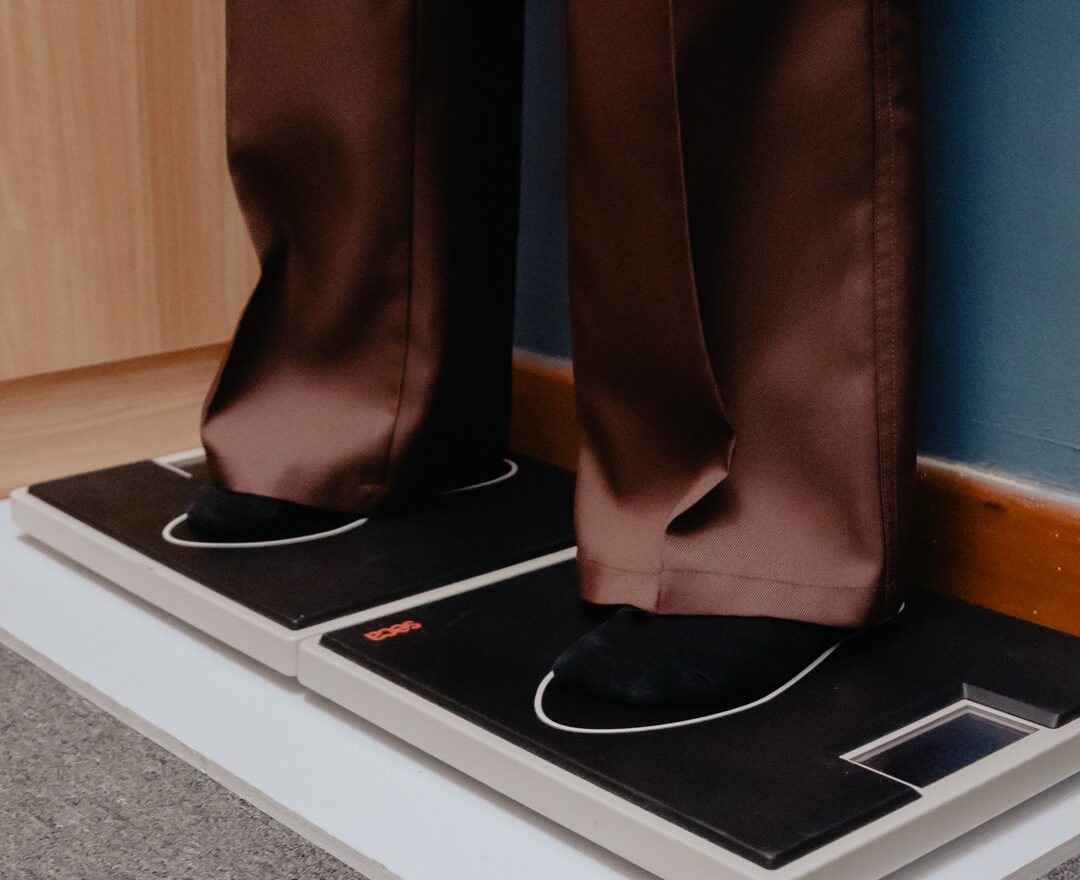In the hustle and bustle of the professional world, working adults often find themselves grappling with a range of health issues induced by the demands of the job. From prolonged hours at the desk to the stress of meeting deadlines, the toll on the body can be significant. This guide aims to explore the common conditions faced by working professionals and how chiropractic care can be a game-changer in promoting overall well-being.
How chiropractic care benefited Farisha, a professional who worked from home
Working from home, Farisha would often be plagued with headaches, day and night, due to tension in her lower back and neck.
Within two months of chiropractic care with Chiropractic Singapore, she is already seeing improvements with her lower back and neck pains. Furthermore, she has also started cultivating good postural habits.
*Video transcript can be found at the end of this guide
Common conditions faced by working adults and how chiropractic care can help manage the pain
Neck pain

The sedentary nature of office work can take a toll on your neck, leading to discomfort and pain. Poor posture, such as hunching over a desk or craning your neck towards a screen, is a common culprit. Additionally, prolonged screen time and improper ergonomics can contribute to this prevalent issue. The strain on the neck muscles and the cervical spine can result in stiffness, soreness, and reduced flexibility.
To alleviate neck pain, it’s crucial to address its root causes. Chiropractic adjustments can help realign the spine, relieving tension in the neck muscles. Moreover, chiropractors often provide guidance on ergonomic setups and posture correction to prevent future issues.
Shoulder pain
Working professionals often experience shoulder pain due to the repetitive nature of tasks and continuous computer use. This pain can manifest in both the upper and lower shoulder areas, affecting mobility and comfort. Tasks such as typing, using a mouse, or even holding a phone for extended periods can contribute to this discomfort.
Chiropractic care can target shoulder pain through specific adjustments that aim to restore proper alignment and function. Additionally, chiropractors may recommend exercises to strengthen the shoulder muscles and improve overall posture, reducing the likelihood of recurring pain.
Lower back pain
Prolonged sitting, a common feature in office environments, is a significant contributor to lower back pain among working adults. The static position of sitting for extended periods can strain the lower back muscles and negatively impact productivity and daily comfort.
Chiropractors employ a range of techniques to address lower back pain, including spinal adjustments to realign the lumbar spine and reduce pressure on the lower back. They may also recommend exercises and stretches to strengthen the core muscles, providing better support to the spine and preventing future episodes of pain.
Headache and migraine
Work-related stress, coupled with extended screen time, can trigger headaches and migraines in working professionals. Tension in the neck and upper back often contributes to these symptoms, highlighting the interconnectedness of the spine and its impact on overall well-being.
Chiropractic care can offer relief by addressing the underlying causes of headaches and migraines. Through spinal adjustments and soft tissue manipulation, chiropractors aim to reduce tension in the neck and upper back, alleviating the frequency and intensity of headaches.
Bad posture
Bad posture is a prevalent issue in the corporate world, affecting not just physical health but also contributing to mental fatigue. Slouching, rounding the shoulders, and sitting with improper alignment can lead to various musculoskeletal issues over time.
Chiropractors work with individuals to correct and improve posture. This may involve spinal adjustments to align the spine correctly, along with exercises to strengthen the supporting muscles. By addressing posture issues, chiropractic care aims to enhance overall well-being and prevent the development of chronic pain conditions.
Fatigue
The demands of a busy work schedule can lead to fatigue, impacting both physical and mental well-being. Long hours, coupled with the mental strain of work-related tasks, can result in reduced energy levels and overall exhaustion.
Chiropractic care takes a holistic approach to address fatigue by promoting optimal nervous system function. Through spinal adjustments, chiropractors aim to ensure that the communication between the brain and body is unimpeded, enhancing energy levels and overall vitality. Additionally, lifestyle recommendations, including exercise and nutrition advice, may be provided to support the body’s natural energy production.
Benefits of chiropractic care for working professionals
Chiropractic care isn’t just about alleviating pain; it offers a comprehensive approach to enhance the well-being of working adults. Here’s a closer look at the key benefits:
1. Pain relief
Working professionals often grapple with various types of pain, and chiropractic adjustments can be a game-changer.
- Neck pain relief:
- Neck pain is a prevalent issue among office workers, often stemming from poor posture or prolonged screen time. Chiropractors employ specific adjustments to release tension in the neck muscles, providing immediate relief.
- Shoulder pain relief:
- Shoulder pain resulting from prolonged desk work or poor ergonomics can be addressed through chiropractic care. Targeted adjustments and soft tissue manipulation can ease muscle tension and restore shoulder mobility.
- Lower back pain relief:
- Lower back pain is a common complaint among those with sedentary jobs. Chiropractic adjustments, coupled with exercises, can alleviate lower back pain by addressing misalignments and improving spinal function.
2. Improved posture
Chronic poor posture is a common concern for office workers, leading to a myriad of health issues. Chiropractors work with individuals to correct postural imbalances.
- Postural correction:
- Chiropractors assess posture and identify areas of misalignment. Through targeted adjustments and exercises, they help individuals improve their posture, reducing the strain on muscles and joints.
- Prevention of chronic pain:
- Correcting posture not only provides immediate relief but also prevents the development of chronic pain conditions associated with poor alignment. This proactive approach contributes to long-term well-being.
3. Enhanced mobility

Sedentary work can lead to decreased joint mobility, impacting overall movement and flexibility. Chiropractic care aims to restore and enhance joint function.
- Joint mobilisation:
- Chiropractors use specific techniques to mobilise stiff joints. This is particularly beneficial for individuals who spend extended periods sitting, as it helps maintain a full range of motion.
- Functional movement improvement:
- Regular chiropractic sessions can improve functional movements, making it easier for individuals to engage in physical activities outside of work. This enhanced mobility contributes to an active and healthy lifestyle.
In essence, chiropractic care for working professionals goes beyond addressing immediate pain; it focuses on correcting underlying issues, promoting a proactive approach to health, and enhancing the overall quality of life. As working adults continue to navigate the challenges of a busy professional life, incorporating chiropractic care into their routine can be a valuable investment in their well-being. Book a spinal check-up with us to find out if chiropractic care is suitable for your needs.
Tips for choosing the right chiropractor for working adults
Navigating the vast sea of healthcare professionals to find the right chiropractor can be a daunting task. However, when it comes to the specific needs of working adults, a chiropractor who understands the challenges of the workplace is crucial. Here are some detailed considerations to help you make an informed choice.
Tip #1: Considerations for a chiropractor specialising in work-related issues
Working adults often face unique challenges, from prolonged sitting to repetitive strain injuries. A chiropractor specialising in work-related issues possesses a deep understanding of these challenges and can provide targeted care. Look for the following:
Understanding of workplace ergonomics
A chiropractor who comprehends the impact of desk setups and sedentary jobs can offer advice on ergonomic improvements. This includes suggestions for chair adjustments, desk height, and proper screen positioning.
Experience with repetitive strain injuries
Working adults may be prone to repetitive strain injuries due to the nature of their tasks. Choose a chiropractor with experience in managing conditions such as carpal tunnel syndrome, tennis elbow, or other injuries resulting from repetitive motions.
Holistic approach to stress-related conditions
Stress is a common factor in many workplace-related health issues. A chiropractor well-versed in stress management techniques, alongside spinal adjustments, can provide comprehensive care for conditions like tension headaches or migraines.
Tip #2: Finding a chiropractor convenient for your work schedule
The demands of a busy work schedule often deter individuals from seeking regular chiropractic care. To ensure consistency, consider the following when selecting a chiropractor:
Flexible clinic hours
Look for chiropractors with flexible clinic hours that accommodate your work schedule. This could include early morning, evening, or weekend appointments, allowing you to integrate chiropractic sessions seamlessly into your routine.
Proximity to your workplace
Choosing a chiropractor close to your workplace enhances accessibility. A clinic near your office enables you to schedule appointments during lunch breaks or before or after work, reducing travel time and making it more likely that you’ll stick to your chiropractic care plan. Here at Chiropractic Singapore, we are conveniently located in 4 locations – Novena, Woodleigh, Jurong East and Tampines.
Tip #3: Evaluating credentials and experience
Ensuring that your chosen chiropractor has the right qualifications and a proven track record is paramount. Consider the following factors:
Educational background and licensing
Check the chiropractor’s educational background and confirm that they are licensed to practice. This ensures that they have undergone the necessary training and meet the professional standards required in their field.
Specialised training in work-related issues
Look for additional certifications or training related to work-related problems. This could include courses on ergonomic assessments, workplace health, or certifications specific to conditions commonly faced by working adults.
Reviews and testimonials
Seek feedback from previous or current patients. Online reviews and testimonials can provide insights into the chiropractor’s effectiveness, bedside manner, and the overall patient experience. Check out our highly rated reviews.
Chiropractic techniques for office-related strain and pain

Adjustments for neck and shoulder tension
Chiropractic adjustments can effectively target neck and shoulder tension, providing relief and restoring a full range of motion. This is done through 4 techniques:
- Cervical spinal adjustment: Cervical spinal adjustments target the vertebrae in the neck region. The chiropractor uses precise and controlled force to realign misaligned vertebrae. This technique can help restore proper spinal alignment and relieve tension in the neck.
- Gonstead technique: The Gonstead technique is a specific chiropractic approach that focuses on a thorough evaluation of the spine, including X-rays and palpation. Chiropractors using this technique aim to make precise adjustments to the subluxations in the cervical spine.
- Activator method: The Activator Method uses a handheld instrument called the Activator Adjusting Instrument to deliver targeted, low-force adjustments. This method is particularly gentle and suitable for patients who may not tolerate traditional manual adjustments.
- Drop table technique: The drop table technique involves a specialised chiropractic table with sections that can be dropped slightly when pressure is applied. This technique is often used for cervical adjustments and can help realign the vertebrae with minimal force.
Tip: Learn more about the tools and techniques used in our guide on Chiropractic adjustments: 6 tools & techniques!
Managing lower back pain from prolonged sitting
Chiropractors can employ techniques to alleviate lower back pain caused by prolonged sitting, addressing both immediate discomfort and underlying issues. Chiropractic care can help with a range of lower back issues, including muscle strains, herniated discs, and misaligned vertebrae. Chiropractors focus on identifying the root cause of your pain and providing targeted adjustments to address it.
Preventive care strategies for working professionals
Beyond addressing existing issues, chiropractors can guide individuals on preventive measures, empowering them to proactively manage their spinal health.
Ergonomics and posture education
Chiropractors are well-versed in the intricacies of ergonomics and posture. They can assess your workplace setup, recommending adjustments to ensure your desk, chair, and computer are optimally aligned. Additionally, they provide valuable insights into maintaining a posture that minimises stress on the spine during long work hours.
Customised exercise plans
Chiropractors create tailored exercise plans to strengthen core muscles and support the spine. These exercises are designed to counteract the impact of prolonged sitting and repetitive movements commonly associated with office work. By incorporating these exercises into your routine, you actively contribute to the health of your spine.
Incorporating chiropractic care into a busy work schedule
In the fast-paced world of working professionals, finding the right balance between career demands and personal well-being is crucial. Incorporating chiropractic care into your busy work schedule might seem challenging, but with the right strategies, it can become a seamless part of your routine.
Scheduling regular chiropractic sessions
Consistency is key when it comes to reaping the full benefits of chiropractic care. Consider scheduling regular sessions with your chiropractor and treating them with the same priority as any work meeting. Set a specific day and time that works for you, and try to stick to it. This consistency allows your chiropractor to track your progress and make adjustments to your session plan as needed.
Remember, prevention is often more effective than intervention. By making chiropractic sessions a routine part of your schedule, you can address potential issues before they escalate, promoting overall health and well-being.
Quick desk stretches for workplace wellness
Prolonged sitting at a desk can contribute to various musculoskeletal issues. Counteract the effects of sedentary work by incorporating quick desk stretches into your daily routine. These simple stretches can be done discreetly and don’t require much time.
Neck stretch:

- Slowly tilt your head to one side, bringing your ear towards your shoulder.
- Hold for 15-30 seconds, feeling the stretch along the side of your neck.
- Repeat on the other side.
Shoulder rolls:

- Shrug your shoulders up towards your ears, then roll them back in a circular motion.
- Repeat for 30 seconds, reversing the direction.
Seated forward bend:

- Sit at the edge of your chair with your feet flat on the floor.
- Hinge at your hips and lean forward, reaching towards your toes.
- Hold for 20-30 seconds to stretch your lower back and hamstrings.
Integrating chiropractic with other health practices
While chiropractic care is beneficial on its own, combining it with other healthy habits amplifies the positive impact on your overall well-being.
Regular exercise:
- Engage in physical activity that complements your chiropractic care. This might include activities like walking, swimming, or yoga.
- Exercise helps strengthen the muscles that support your spine, enhancing the effects of chiropractic adjustments.
Balanced diet:
- Nutrition plays a crucial role in your body’s ability to heal and function optimally. Ensure your diet includes a variety of nutrients, including calcium and vitamin D for bone health.
- Consult with your chiropractor for personalised nutritional advice tailored to support your specific needs.
Stress management:
- Incorporate stress-reducing practices into your routine, such as meditation, deep breathing exercises, or mindfulness.
- Chiropractic care can help alleviate physical tension caused by stress, and combining it with stress management techniques enhances the overall impact.
By seamlessly weaving chiropractic care into your daily life and complementing it with other health practices, you create a comprehensive approach to well-being. Book a session with a chiropractor to set the foundation for a healthier and more resilient you, ready to tackle the demands of a busy work schedule with vitality and focus.
Navigating chiropractic care with work benefits
Chiropractic care can be a valuable resource for working professionals looking to maintain their health and well-being. Navigating the landscape of work benefits and understanding how chiropractic services fit into your overall healthcare plan is crucial. Let’s break down the key aspects:
Understanding insurance coverage for chiropractic
When it comes to chiropractic care, insurance coverage can vary. Begin by reviewing your insurance policy to determine the extent to which chiropractic services are covered. Some policies may fully cover a certain number of sessions, while others may offer partial coverage. Understanding your insurance benefits can significantly impact your decision-making process regarding chiropractic care.
It’s essential to inquire about any limitations, such as the number of covered sessions per year or specific conditions that qualify for coverage. Additionally, find out if your insurance provider has a network of preferred chiropractors, as this can affect your out-of-pocket expenses.
Employer wellness programs and chiropractic services
Many forward-thinking employers recognise the importance of employee well-being and have incorporated chiropractic services into their wellness programs. Check with your HR department or review your employee benefits package to see if chiropractic care is included.
Employer-sponsored wellness programs often cover a range of services aimed at promoting health and preventing workplace-related injuries. Chiropractic care may be offered as part of these initiatives, demonstrating your employer’s commitment to supporting your overall health.
If your employer provides chiropractic services as part of the wellness program, take advantage of this benefit. It not only contributes to your physical well-being but can also enhance your job satisfaction and productivity.
Advocating for workplace health initiatives
If your workplace doesn’t currently offer chiropractic services or other health initiatives, consider advocating for their inclusion. Many companies are receptive to employee feedback and actively seek ways to enhance workplace well-being.
Here are some steps you can take to advocate for workplace health initiatives:

- Suggest ergonomic improvements: Propose ergonomic adjustments to workstations, chairs, and computer setups to promote better posture and reduce the risk of musculoskeletal issues.
- Wellness programs: Advocate for the implementation of comprehensive wellness programs that encompass not only chiropractic care but also fitness classes, mental health resources, and nutritional guidance.
- Educational seminars: Recommend hosting seminars or workshops on topics related to maintaining a healthy lifestyle. This could include sessions on proper desk ergonomics, stress
- management techniques, and the benefits of chiropractic care.
- Employee feedback: Encourage your employer to gather feedback from employees about their well-being needs. This can help tailor health initiatives to the specific requirements of the workforce.
Revitalising workdays: Nurturing well-being through chiropractic care for the modern professionals
Prioritising spinal health is crucial for working adults striving to balance the demands of a busy professional life. Chiropractic care offers a proactive and holistic approach to address and prevent common issues faced in the workplace. If you are keen to explore chiropractic care, book a spinal check-up now with us!
Frequently asked questions about chiropractic for working adults
How often should working professionals seek chiropractic care?
The frequency of chiropractic care depends on individual needs and the nature of the issues being addressed. Some may benefit from weekly sessions, while others may find monthly visits sufficient. Consult with your chiropractor to determine a personalised plan.
Can chiropractic help with headaches and migraines from work stress?
Yes, chiropractic care can be beneficial in managing headaches and migraines caused by work-related stress. By addressing spinal misalignments and tension, chiropractors can provide relief and contribute to overall stress reduction.
Video Transcript for testimonial video with Farisha Ishak
Introduction:
Hi, my name is Farisha Ishak and I’ve been at Chiropractic Singapore for two months now.
Qns: What was life like before chiropractic care?
Ans: So especially when I work from home, I don’t have a proper desk and a proper ergonomic chair which is very important. I get a lot of tension in my lower back and neck so it causes a lot of headaches for me.
I think the headaches really take the cake for me. It really affects my productivity at home, especially when I go to bed at night, it really is not comfortable at all. So I figured that I needed to get it fixed ASAP.
So I’ve gotta be honest, I think if not for my sister and her family, I probably would have been okay living with the pain because I’ve never researched or looked too much into chiropractic. So when I heard from my sister who is currently pregnant about her lower back pain that’s completely vanished because of chiropractic care. I decided to give it a try and during my first check-up, I discovered there were so many things that were wrong with my back and my neck. So I’m really glad I got that checked out and I’m on the way to fixing it right now.
Qns: How has chiropractic care changed your life?
Ans: So I’ve been with chiropractic Singapore for two months now, but I’ve already felt some improvements especially to my lower back and my neck. So, one, I definitely felt lesser headaches and they are less intense if there are. And for my lower back as well, every time I feel pain and every time I go for adjustments, it would just vanish, and I think it’s definitely less painful for my lower back so that has been really cool and I didn’t expect that.
The thing about chiropractic care is that it’s definitely a two-way thing, like I do come for my adjustments, but at the same time, I also have to manage my own habits. So the fact that I come for chiropractic adjustments so often like twice a week, it sort of makes me more aware of my posture and I think my posture has been the biggest thing causing all these tensions in my back and my neck. So, the fact that I go for chiropractic adjustments so often sort of reminds me every time that you have to sit properly, you have to stand properly. So it has definitely increased my awareness which is great but it also reminds me that chiropractic care is a two-way thing.
You can get adjusted but you also have to fix your habits in order to be better








